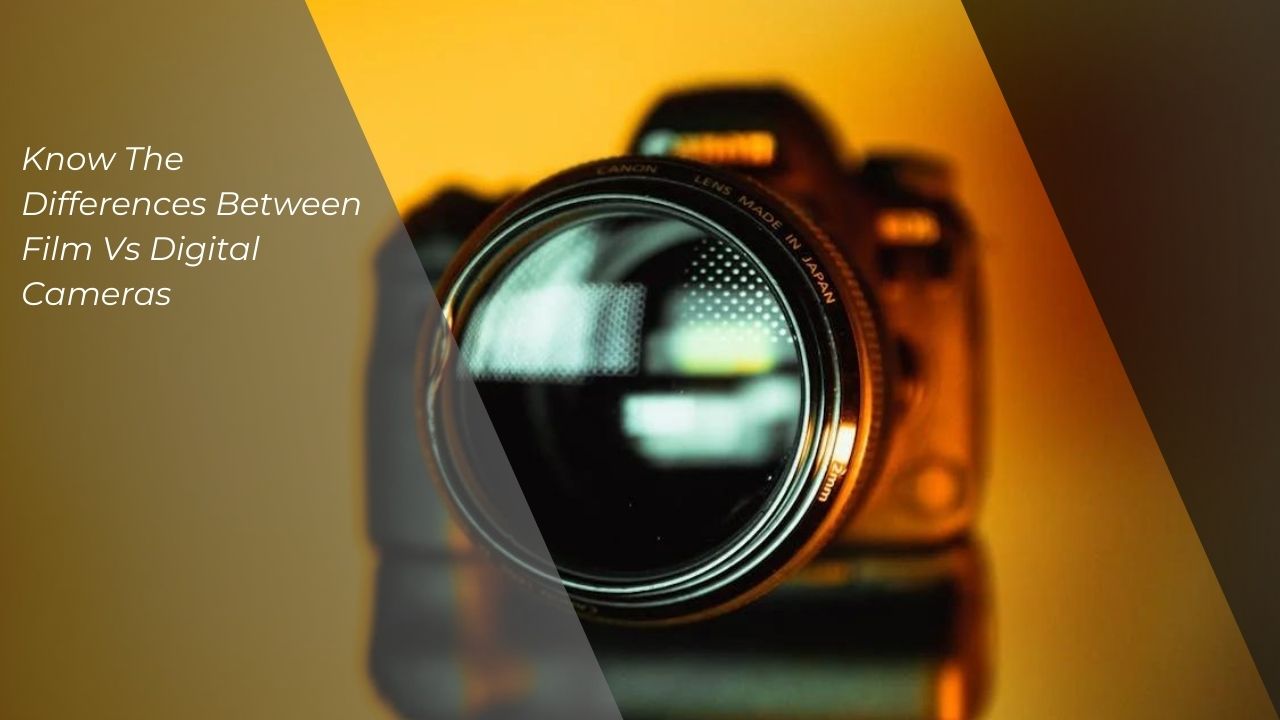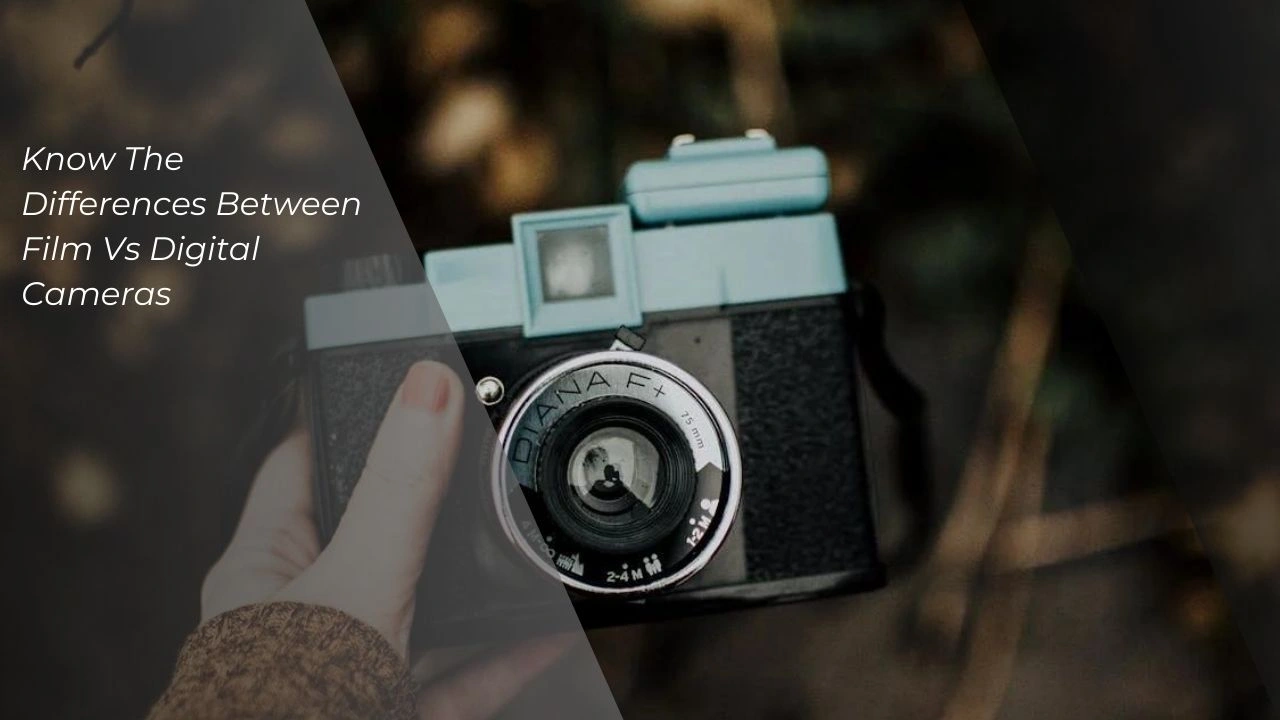Film Vs Digital cameras, which one is the better one? And why you need to understand the difference between the two?
In a world where digital image sensors are mostly used to take pictures, more and more photographers are becoming interested in older film formats.
But why would anyone still prefer to use analog film for photography in this day of advanced technological convenience?
Also Read
Well, you need to understand the pros and cons between the two cameras before deciding your choice!
So, Film vs Digital cameras? What are the differences? And how one is better than the others? Let’s dig in!
Table of Contents
Film Vs Digital Cameras

Although there have been many various photographic techniques developed since the invention of photography, film and digital cameras are still the two primary methods used to create images in the present era.
The film photography or sometimes called the analog photography used a chemical process to capture an image on a light-sensitive film.
After going through certain processing, the film can be projected for viewing, used to make physical prints, or digitally captured to produce a digital image.
Whereas in digital photography An electronic image sensor is used to gather light in order to capture an image.
After processing, the data becomes a digital image that can be instantly viewed on the camera’s display or saved to a different computer for sharing, editing, and watching.
So, what are the key differences between digital and analog cameras? Let’s find out!
1. Resolution
Regardless of whether they use digital cameras or film, photographers aim to capture crisp images with high detail. In digital photography, this is achieved by having a sensor with a high number of pixels.
Film, although lacking in pixels, relies on a different method called angular resolution to measure its sharpness.
Luckily, these two measurement systems can be compared to determine the equivalent resolution of digital and film photographs.
Professional film photographers often use medium or large formats. Research suggests medium format film can capture a staggering 400MP image, though digital scanning reduces this to 50-80MP. Similarly, larger formats like 4×5 inches can hold around 200MP after scanning.
2. Digital Noise / Film Grain
Sometimes when we took a picture whether using a digital or analog cameras, there are some random appearance of small textures within a photograph this is may be referred to as digital noise or film grain.
Grain on analog film is caused by microscopic chemical particles that do not get enough light. Noise in digital image sensors is the result of undesired signals produced by the digital circuitry of the camera; this can be a result of overheating or the sensor’s capacity to handle erratic impulses in the air.
3. Dynamic Range
In the past, film boasted a clear advantage over digital cameras in terms of dynamic range. However, that gap has significantly narrowed.
Capturing an image’s dynamic range involves factors like the sensor, file compression, and more. Fortunately, digital technology has largely caught up to film in this area.
And on top of that. a lot of digital cameras use their ability to capture sequential photos and HDR to produce images with a far higher dynamic range than they could on film.
4. Film Speed
While film speeds typically range from 100 to 3200 ISO, with a rare option at 6400, digital cameras outperform film in low light.
Modern digital cameras can capture images with similar noise levels to film at these ISOs, but is also have the capability to push their sensitivity much further without a significant increase in grain.
When necessary, analog film can be pulled or pushed several stops, however this will alter the image’s contrast.
Although some photographers take use of this to achieve the desired effect, it is still not possible to achieve excessively high ISO rates without affecting the tones of the images.
The ability to adjust film speed in between shots is another benefit of digital cameras. For the majority of roll films that are commonly used nowadays (135, 120, etc.), the ISO remains constant throughout the roll. Large format cameras are an exception, as they may switch between photos and only require one sheet at a time.
5. Cost and Convenience
Both the digital and analog formal have their own pros and cons when it comes to cost and convenience.
Digital formats usually have a more expensive upfront cost and with the constant development of technology, you’ll be more likely to upgrade your gear as the year goes by. But as for the convenience and speed, nothing beats digital photography.
Digital formats also eliminate the possibility of running out of film when you’re taking a huge amount of pictures, as a large memory cards can easily store hundreds if not thousands of hi-res photos.
For film or analog photography, the upfront cost is much cheaper than it is with the digital format, you’ll also be able to use your camera for decades to come.
Having said that, film rolls and development costs will cost analog shooters a lot more money. Film needs to be preserved more carefully since, unlike digital images, it cannot be simply erased and is not always readily accessible.
So there you go! All you need to know about Film Vs Digital cameras with its pros and cons!
So, what do you think you’ll choose? The newer digital format or the vintage analog film format?
But, especially if you choose the digital formats, some digital cameras have a Bluetooth for its feature. And as we know Bluetooth is using a radio frequency technology which is strictly regulated in Indonesia.
You’ll need the SDPPI type approval for cameras if you want to sell or distribute your camera in the Indonesian market.
This certification ensures that all of the devices that use a radio frequency technology are within Indonesian standard and regulation.











